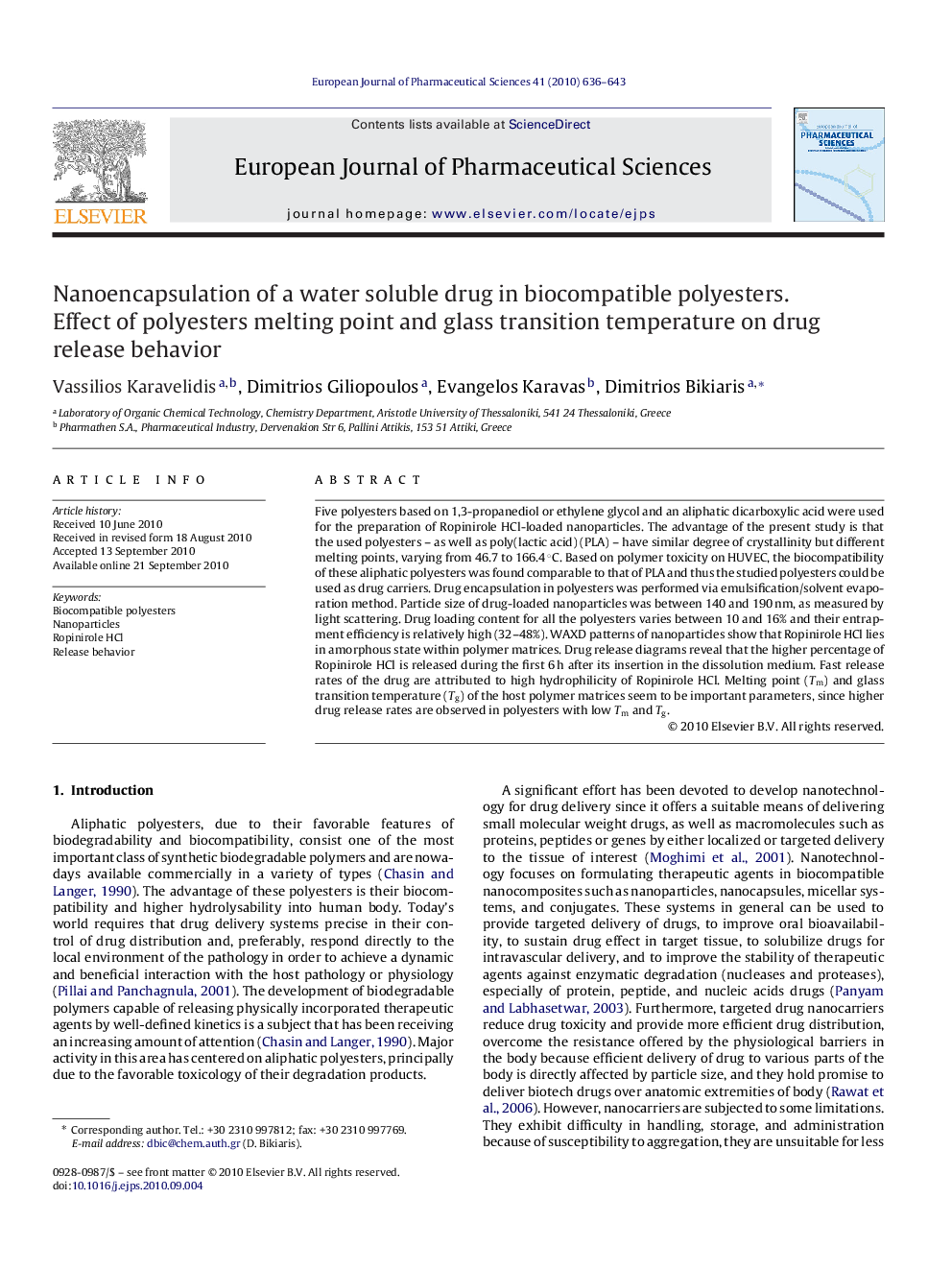| Article ID | Journal | Published Year | Pages | File Type |
|---|---|---|---|---|
| 2481928 | European Journal of Pharmaceutical Sciences | 2010 | 8 Pages |
Five polyesters based on 1,3-propanediol or ethylene glycol and an aliphatic dicarboxylic acid were used for the preparation of Ropinirole HCl-loaded nanoparticles. The advantage of the present study is that the used polyesters – as well as poly(lactic acid) (PLA) – have similar degree of crystallinity but different melting points, varying from 46.7 to 166.4 °C. Based on polymer toxicity on HUVEC, the biocompatibility of these aliphatic polyesters was found comparable to that of PLA and thus the studied polyesters could be used as drug carriers. Drug encapsulation in polyesters was performed via emulsification/solvent evaporation method. Particle size of drug-loaded nanoparticles was between 140 and 190 nm, as measured by light scattering. Drug loading content for all the polyesters varies between 10 and 16% and their entrapment efficiency is relatively high (32–48%). WAXD patterns of nanoparticles show that Ropinirole HCl lies in amorphous state within polymer matrices. Drug release diagrams reveal that the higher percentage of Ropinirole HCl is released during the first 6 h after its insertion in the dissolution medium. Fast release rates of the drug are attributed to high hydrophilicity of Ropinirole HCl. Melting point (Tm) and glass transition temperature (Tg) of the host polymer matrices seem to be important parameters, since higher drug release rates are observed in polyesters with low Tm and Tg.
